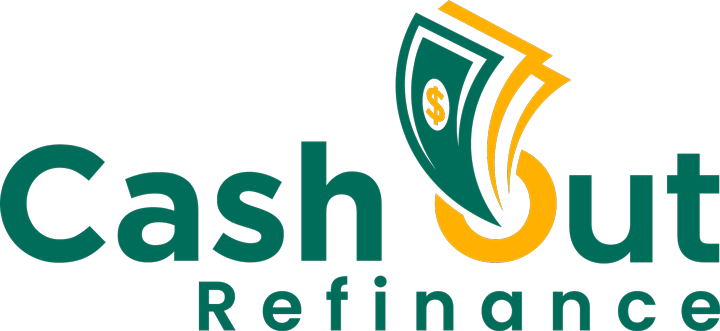Unlocking Home Equity for Multiple Properties with a Portfolio Cash-Out Refinance
A portfolio cash-out refinance is a powerful financial tool for real estate investors who own multiple properties. This refinancing strategy allows investors to tap into the equity of multiple properties at once, consolidating debt and providing access to cash for further investments, renovations, or debt reduction.
Whether you’re an experienced real estate investor or a first-time portfolio owner, understanding the portfolio cash-out refinance process, benefits, and potential risks is crucial to maximizing your financial potential.
What is a Portfolio Cash-Out Refinance?
A portfolio cash-out refinance enables real estate investors to refinance multiple properties under a single loan while pulling equity out in the form of cash. Unlike traditional cash-out refinancing, which applies to a single property, portfolio refinancing allows you to leverage the collective equity of multiple properties.
How It Works:
1️⃣ An investor refinances multiple properties under one loan instead of managing multiple separate mortgages.
2️⃣ The new loan replaces the existing mortgages while pulling equity as a lump sum of cash.
3️⃣ The investor can use the cash for additional investments, property improvements, debt consolidation, or other financial goals.
💡 Key Benefit: Portfolio cash-out refinancing simplifies loan management while unlocking more capital for expansion and financial flexibility.
Who Should Consider a Portfolio Cash-Out Refinance?
A portfolio cash-out refinance is ideal for:
✔ Real Estate Investors – Those who own multiple rental properties and want to access home equity for new investments.
✔ Property Managers – Those looking to consolidate multiple mortgages into one streamlined loan.
✔ Landlords – Who want to renovate or improve properties while maintaining liquidity.
✔ Business Owners – Who own real estate and need cash for business expansion or working capital.
✔ Individuals with High-Interest Debt – Seeking to lower monthly payments by consolidating loans at a lower rate.
💡 Investors with strong property appreciation can maximize equity withdrawal.
Key Benefits of a Portfolio Cash-Out Refinance
✔ Access Equity Across Multiple Properties – Unlock more funds compared to single-property cash-out refinancing.
✔ Lower Monthly Payments – Replacing multiple mortgages with one low-interest loan can reduce overall payments.
✔ Simplify Loan Management – Consolidating loans reduces paperwork and makes financial tracking easier.
✔ Invest in More Properties – Use the cash to purchase new rental properties or expand your real estate portfolio.
✔ Finance Renovations & Upgrades – Improve existing properties to increase rental income and property value.
✔ Reduce Interest Rates – If interest rates have dropped since your original loans, refinancing at a lower rate can save money.
✔ Extend Loan Terms – Lower monthly payments by extending the loan repayment period.
✔ Consolidate Debt – Merge high-interest loans into one manageable loan with better terms.
💡 By refinancing a portfolio, investors gain flexibility while optimizing cash flow.
Portfolio Cash-Out Refinance Loan Requirements
To qualify for a portfolio cash-out refinance, lenders consider the following factors:
1. Property Count & Loan Size
✔ Some lenders require a minimum of 5-10 properties for portfolio loans.
✔ Loan amounts typically range from $500,000 to $50 million.
2. Loan-to-Value (LTV) Ratio
✔ Lenders typically allow a maximum LTV of 65%-75%.
✔ The total loan cannot exceed the combined equity of the portfolio.
3. Credit Score
✔ Minimum credit score of 680+ for prime rates.
✔ Some non-QM lenders offer flexible credit requirements.
4. Debt-to-Income (DTI) Ratio
✔ DTI ratio must be below 50% for most lenders.
✔ Higher rental income may allow exceptions.
5. Rental Income & Debt Service Coverage Ratio (DSCR)
✔ Some lenders require a 1.25+ DSCR, meaning rental income should be 125% of mortgage payments.
6. Ownership & Property Types
✔ Eligible for single-family homes, multi-family properties, condos, and mixed-use buildings.
✔ Some lenders may not allow vacant properties in the portfolio.
💡 Key Takeaway: Strong credit, property equity, and rental income improve approval chances.
How to Use Funds from a Portfolio Cash-Out Refinance
Investors can utilize cash-out funds in multiple ways, such as:
🏡 Expanding a Real Estate Portfolio – Purchase new rental properties or commercial real estate.
🔨 Renovations & Property Upgrades – Improve properties to increase rental value or resale price.
💳 Debt Consolidation – Pay off high-interest loans, credit cards, or other liabilities.
💰 Business Expansion – Fund new business ventures or invest in additional income streams.
📈 Stock Market or Alternative Investments – Use real estate equity to diversify investments.
💡 Strategic reinvestment maximizes long-term financial gains.
Portfolio Cash-Out Refinance vs. Traditional Refinance
| Feature | Portfolio Cash-Out Refinance | Traditional Refinance |
|---|---|---|
| Number of Properties | Multiple | One property |
| Loan Consolidation | Yes, combines multiple mortgages | No, only refinances a single loan |
| LTV Limit | Typically 65-75% | Typically 80% |
| Loan Management | One loan covers multiple properties | Separate loans for each property |
| Interest Rates | Often slightly higher than traditional | Lower for primary residence |
| Best For | Real estate investors with multiple properties | Homeowners refinancing a single property |
💡 A portfolio cash-out refinance provides more flexibility for investors managing multiple properties.
Steps to Apply for a Portfolio Cash-Out Refinance
Step 1: Assess Property Equity & Loan Needs
✔ Determine how much equity is available across your portfolio.
✔ Identify how much cash you need and how you plan to use it.
Step 2: Research Lenders & Loan Terms
✔ Compare lenders specializing in portfolio loans.
✔ Check interest rates, fees, and loan requirements.
Step 3: Gather Financial Documentation
✔ Credit score & income verification.
✔ Property appraisals & rental income documentation.
✔ Current mortgage statements.
Step 4: Apply for Pre-Approval
✔ Submit financials to lenders for loan pre-approval.
✔ Review loan terms and estimated loan amount.
Step 5: Underwriting & Property Appraisals
✔ Lender conducts property appraisals and financial analysis.
✔ Lenders review rental income and debt-to-income ratios.
Step 6: Loan Approval & Closing
✔ Finalize loan terms and sign closing documents.
✔ Receive cash-out funds and begin using capital.
💡 Key Takeaway: Strong property financials speed up approval and maximize loan benefits.
Real-Life Examples of Portfolio Cash-Out Refinancing
Example 1: Expanding a Real Estate Portfolio
✔ Investor Profile: Owns 8 rental properties worth $3M.
✔ Current Loan Balances: $1.5M.
✔ New Portfolio Loan: $2.2M (70% LTV).
✔ Cash Received: $700K.
💡 Investor used funds to purchase two more multi-family properties.
Example 2: Renovating Existing Properties
✔ Investor Profile: Owns 6 single-family rentals worth $2.5M.
✔ Current Loan Balances: $1.3M.
✔ New Portfolio Loan: $1.8M (65% LTV).
✔ Cash Received: $500K.
💡 Investor upgraded rental units to increase monthly rent.
Final Thoughts: Is a Portfolio Cash-Out Refinance Right for You?
🏡 A portfolio cash-out refinance is an excellent option for real estate investors seeking financial flexibility and growth opportunities.
💡 Considering refinancing your real estate portfolio? Speak with a lender today to explore your options!


